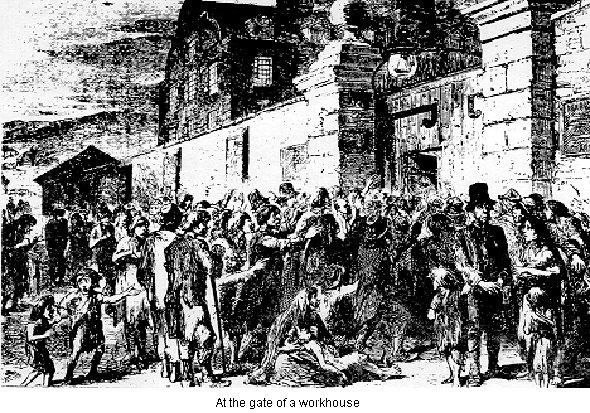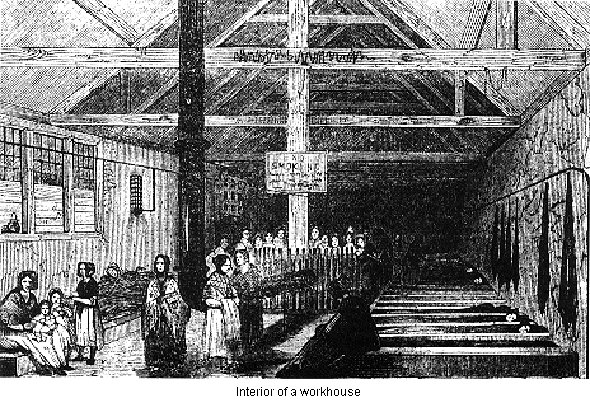Journal Volume 5 2006
Surplus People from Newcastle and Ballyvolan (continued/2)
Famine and Poor Law
In 1845, there was a partial failure and the 1846 crop was a total disaster. Local economies collapsed. A simple system of social welfare existed in Ireland as a result of the Poor Law that had been passed in the late 1830s. This set up 130 workhouses to accommodate 100,000 inmates, and was funded by taxes, or rates, levied on property owners. The workhouses themselves and the harshness with which they were run were deliberately designed to discourage anyone from seeking admittance. Only 'destitute persons who were incurably lame, blind, sick, or labouring under bodily infirmity’ would be admitted. ‘Orphaned children left in a state of destitution’5 would also be allowed in. On entering, families were separated, males in one section, females in another, with the children taken into a third dormitory. They were allowed to meet once a week, and every inmate was given work to do either in the workhouse (washing, cleaning, and attending the physically and mentally ill) or in the yard, usually breaking stones for road works. Punishment for infringement of rules and insubord-ination ranged from solitary confinement to expulsion.

Despite the extreme bleakness of such a regime, workhouses were inundated by people clamouring for admission following the severe potato shortage of 1845. Soon every workhouse in the country was filled beyond its intended numbers. They became hotbeds of contagion as paupers suffering from fever brought on by malnutrition were allowed into them. The Poor Law, less than ten years old, was useless. Extensive redrafting of the legislation was required so that more destitute people would qualify for relief. One amendment was the introduction of outdoor relief. This, and other changes, increased costs and these costs had to be met by the ratepayers. The biggest landlords were to be hardest hit.

Landlords throughout Ireland were faced with reducing the number of uneconomic tenants on their estates, and to get the now homeless 'paupers' out of their district so they would not be a burden on the local rates. Large scale evictions, known as 'clearances' took place. There was no agreed policy between landlords, each acted as he saw fit or as his wealth allowed. In the vast majority of cases, poor tenants were simply turned out on to the road to fend for themselves as best they could. Some wandered into towns to live in unspeakable squalor, others moved from place to place. Many died by the roadside.


